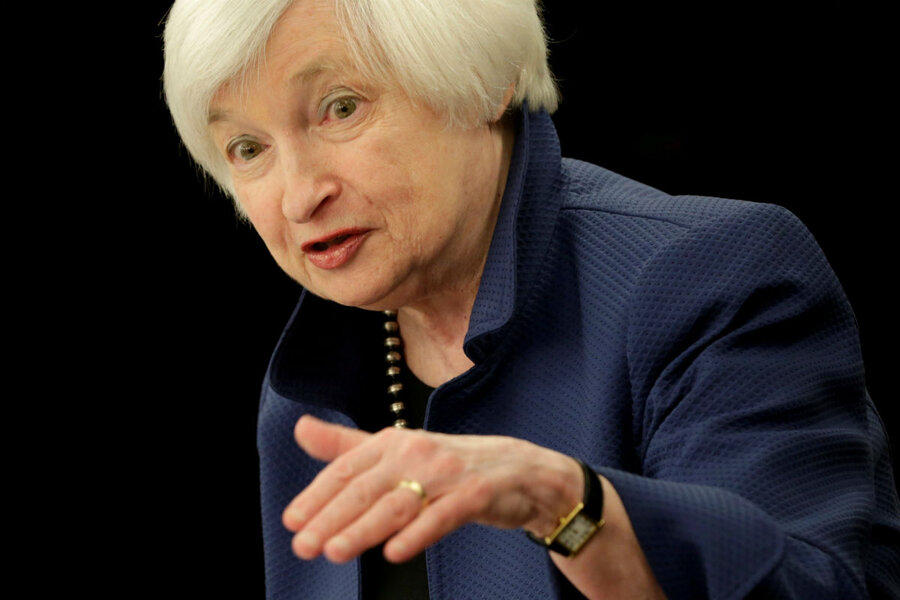Fed hikes interest rates. Who wins and who loses?
Loading...
There’s never been a better time to finish paying off that credit card debt.
The Federal Reserve chose to raise interest rates by a quarter of a percent in a nearly unanimous decision on Wednesday. The vote signals growing confidence in the stability of the American economy, with unemployment near at nine-year low at 4.7 percent and inflation starting to creep closer to the targeted 2 percent.
Interest rates remain historically low in the wake of the Great Recession, but will likely be on the rise if the Fed carries out its planned series of hikes over the next few years, which could increase the burden of mortgages and credit card debt.
“The simple message is the economy is doing well,” Fed Chair Janet Yellen said in a news conference after announcing that the rate would move from the range of 0.5 to 0.75 percent to 0.75 to 1 percent, the third such increase since December 2015.
After the financial crisis of 2008, the Fed responded by dropping interest rates to near zero in an effort to stimulate the economy by encouraging banks to borrow and lend money at little cost. Now rising employment and a growing GDP threaten to push inflation past the 2 percent level economists consider healthy.
“The Fed still has their foot on the monetary accelerator almost to the floorboard. They have to take that foot off,” Steven Rick, chief economist at CUNA Mutual Group, told The Washington Post.
This current hike follows just three months after the second that occurred in December, and the Fed predicts two more this year, with another six or seven following by 2020.
From a bird's eye view of the national economy, these increases are good news, as MarketWatch’s Jeffry Bartash explained:
It may be strange to think of an economy growing just 2 percent a year – well the below the nation’s 3.3 percent historic average – as overheating. Yet the US expansion is now almost eight years old, the labor market is tight, and the unemployment rate is near a nine-year low of 4.7 percent. Companies have to pay more to find workers and wages are rising at the fastest pace since the recovery began in 2009.
On an individual level, the impact will vary. Limiting inflation protects the purchasing power of personal savings by keeping the prices of goods from rising too quickly.
But those with credit card debt or mortgages might feel more of a pinch. The rates at which banks can borrow money trickles out to consumer loans, and if the bank’s fees go up, they’ll raise their rates as well.
When it comes to mortgages in particular, most experts don’t recommend refinancing based on one rate hike alone, which may raise monthly payments by just $10 to $20. However, 10 hikes over the next few years could add up to 2 percent or more, which could be worth considering.
If growth continues unabated, the next variable for the Fed to consider will be President Trump’s budget, which Dr. Yellen says Federal Reserve officials have not yet discussed in detail.
Mr. Trump has proposed an ambitious program of tax cuts, increased infrastructure spending, and deregulation, but Yellen said Fed officials should have “plenty of time” to formulate a response.
This report contains material from the Associated Press.








